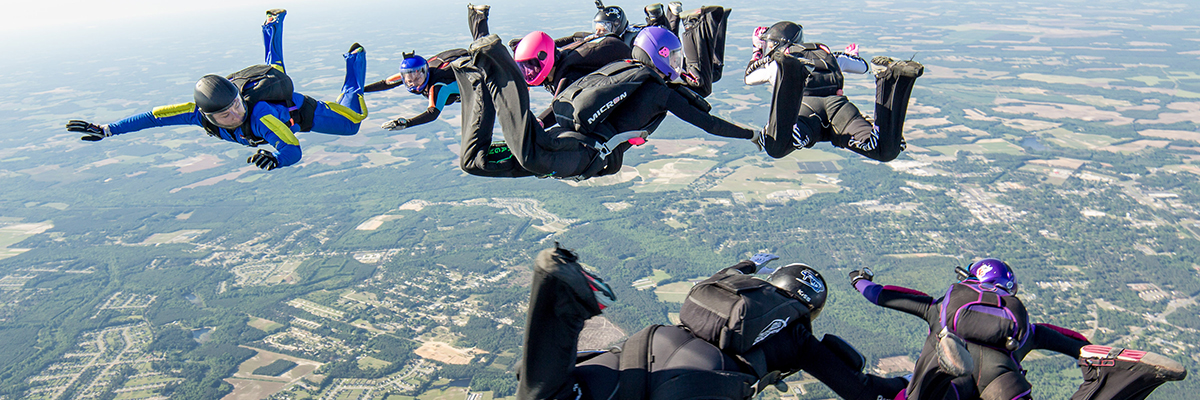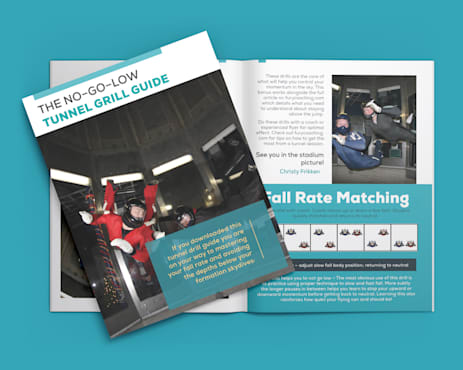Do I need a weight belt?
Monday, March 8, 2021

Are you confused by all the “helpful” advice about wearing a weight belt? Has someone told you that wearing a weight belt will negatively affect your flight skills? On the other hand, are told that you have to wear one always?
This guide will discuss what to look at before you jump and what feedback you will have on the jump, indicating you need more next time. I’ll finish with the myth that leaves my jaw open when I hear someone repeat it.
FUN-damentals
Before you can decide if a weight belt is appropriate, you need to cover the fundamentals.
Make sure you can fall fast and slow correctly.
End Goal
The gap between the slowest and fastest you can fall is your range. Your size, flexibility, and technique all contribute to how broad your range is. Having a big range is excellent since it means you can successfully fly with a wider variety of people and adjust your fall rate more dynamically.
Before the jump
Before you make the jump, you’ll need to guess about wearing a weight belt and how much. You will do this by observing your fellow jumpers and your particular formation as you prepare a skydive.
There isn’t a formula for how much you should wear; you will have to make an educated prediction. If you have the chance to jump with the same group multiple times, you will learn and fine-tune how much you bring.
Size Matters
First, consider your physical size relative to others on the jump. People with less mass fall slower, people with more fall faster. Your height provides surface area, so tall people will fall a bit more slowly. Flexibility can increase your fall rate range, too – but beware. Remember, it is essential to be in the middle of your range to perform your best – not in a full arch the entire time.
If possible, also look at what people are wearing. Ask other more experienced people your size how much they intend to use (if any). Notice if the largest people are wearing baggier suits appropriate to their faster fall rates.
Formation Shape
Formations with a lot of grips in the center fall slower. Examples of this are sidebodies, compressed accordions, or pins. In contrast, centers like stars and open accordions fall faster. Larger groups tend to float more than smaller ones.
Your Position
People in the center have grips and need to keep the speed up as a formation builds. If you are on the outer edge of a formation, you will be subjected to a slower fall rate.
If you are outfacing, you will want to wear less lead since outfacers tend to sink a little. If you have lots of close-in grips – sidebodies, cats, or compressed accordions – wear more lead as picking these up requires extra fall rate.
During the skydive
You made your best guess, did you get it right? Here are the signs you should wear more lead the next time you are in that situation.
You feel stuck
If you have no problem approaching the formation, but can’t pick up a grip, you probably need more lead. Taking grips requires you to reach out with your arms, which adds surface area. The extra surface area means you must arching more.
If you are at your max, you‘ll feel stuck – or even flip over when you reach for a grip.
You go low
This one is counter-intuitive – people can go low for being too floaty. This scenario happens when someone too light reaches for grips. They are unable to compensate for the added surface area and go upsy-daisy over the top. The result is they tumble and end up low.
If you find yourself getting low when taking grips, you might need more weight.
Chicken Wings
One way to fall faster is to reduce our surface area by pulling your arms either back or upwards. Stretching your arms backward produces a “chicken wing” or “hanger” body position.
Both are terrible for formation skydiving because they keep you from successfully picking up grips. So, while they can be used to dump lift, you’ll be very limited in your ability to dock and move around. You can ditch this bad habit with tunnel practice, but you can start to fix it by adding the correct amount of lead.
If you find yourself with your elbows behind or above your ears, you probably need more weight.
Bonus Tidbits
Canopy considerations
Don’t forget adding lead can have an impact on your canopy wing loading. If you are thinking about purchasing gear, factor in your likely weight belt needs when picking a canopy.
Minimum starting lead
If you think you need a weight belt, start with a minimum of 4lbs. Four pounds is a tiny increment – less won’t have enough of an effect.
Don’t leave Christy speechless with this myth

Want to see me pull my hair out? Repeat the old-timey myth that using a weight belt is a crutch or bad for your flying. The opposite is true. NOT WEARING A WEIGHT BELT WHEN YOU NEED ONE WILL TEACH YOU POOR FLYING HABITS. We both will be very sad as you struggle for hours in the tunnel to unlearn your chicken-wing body position.
FS world champions wear weight belts when they win medals. If a weight belt is appropriate for a particular person, it will help them perform.
Hopefully, you now know what to look at when deciding how much lead to wear, and more importantly, you can feel feedback when you should have used more. By circling in on what is right for you on different kinds of jumps, you’ll fly powerfully and strong in all sorts of situations!
Get some tunnel practice to learn what too fast and too slow feel like!
Tags: bodyflight, fallrate



